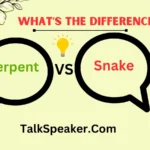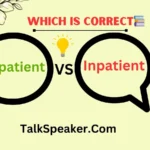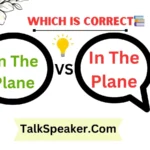Last updated on October 21st, 2024 at 03:40 pm
Understanding the distinctions between informational and informative texts is crucial for effective communication, whether you’re crafting educational content, writing reports, or engaging with your audience online.
This comprehensive guide will explore these text types, their characteristics, and their applications, offering insights and practical examples to enhance your writing and content creation skills.
What Are Informational and Informative Texts?
Definitions
Informational Text: Informational texts are designed to present factual information in a clear and organized manner. They aim to inform the reader by providing detailed and objective content. Examples include:
- User Manuals: Instructions for operating devices.
- Textbooks: Comprehensive guides on academic subjects.
- How-to Guides: Step-by-step instructions for performing tasks.
Informative Text: Informative texts are intended to educate, explain, or clarify a topic for the reader. They often involve a more engaging style to ensure that the information is accessible and interesting. Examples include:
- News Articles: Reports on current events.
- Research Summaries: Overviews of academic studies.
- Educational Blog Posts: Articles that provide insights and explanations on various topics.
Key Differences
Understanding the differences between these text types is essential for tailoring your content effectively.
- Purpose and Intent:
- Informational Texts: Focus on presenting data and facts.
- Informative Texts: Aim to educate and engage with detailed explanations.
- Structure and Presentation:
- Informational Texts: Often feature headings, bullet points, and a straightforward layout.
- Informative Texts: May include engaging language, detailed sections, and interactive elements.
- Audience and Use Cases:
- Informational Texts: Target readers seeking specific information or instructions.
- Informative Texts: Cater to readers looking to understand a topic more deeply.
Characteristics of Informational Text
Purpose
The primary goal of informational text is to provide factual, objective information. It serves as a reference or guide for readers who need accurate details about a subject.
Structure
Informational texts often follow a structured format to facilitate easy access to information. Common elements include:
- Headings: To organize content into distinct sections.
- Bullet Points: To list information clearly.
- Tables and Charts: To present data visually.
Examples
Here are some examples of informational texts and their typical characteristics:
| Type | Characteristics | Examples |
| Manuals | Step-by-step instructions, detailed explanations | Appliance user manuals |
| Encyclopedias | Comprehensive coverage of topics, organized alphabetically | Encyclopedia entries |
| How-to Guides | Practical tips, sequential steps | DIY project instructions |
Tone and Style
The tone of informational texts is generally objective and straightforward. The style is often utilitarian, focusing on clarity and precision rather than engaging narrative elements.
Having trouble with English? We make it simple with easy tips and guides to help you improve.
Start learning and boost your skills Talk Speaker.
The Purpose and Style of Informative Writing
Purpose
Informative writing aims to educate or clarify a topic for the reader. It is designed to be engaging and accessible, making complex information easier to understand.
Style
The style of informative writing involves:
- Engaging Language: Using clear and relatable language to connect with the reader.
- Detailed Explanations: Providing thorough explanations and examples.
- Structured Layout: Organizing content with headings, subheadings, and bullet points for clarity.
Examples
Informative writing can be found in various formats:
- Educational Articles: Articles that break down complex subjects into digestible information.
- How-to Guides: Detailed instructions on performing tasks or solving problems.
- Reports: Comprehensive analyses of research findings or data.
Types of Informative Texts
Descriptive Texts
Descriptive texts provide detailed descriptions of a subject. They aim to paint a vivid picture for the reader by focusing on sensory details and characteristics.
Examples:
- Product descriptions on e-commerce websites.
- Event overviews in promotional materials.
Expository Texts
Expository texts aim to explain and interpret facts. They provide an objective analysis of a topic, often including evidence and examples.
Examples:
- Scientific reports detailing experimental results.
- Historical accounts summarizing significant events.
Analytical Texts
Analytical texts break down information into components and provide insights based on the analysis. They often involve evaluating different aspects of a topic.
Examples:
- Market analysis reports.
- Critical reviews of literature or media.
Comparative Texts
Comparative texts examine the similarities and differences between subjects. They help readers understand how different items or concepts relate to each other.
Examples:
- Comparison charts in product reviews.
- Articles comparing different theories or methodologies.
Utilizing Visual Aids in Informational Content
Types of Visual Aids
Visual aids enhance informational content by making complex information more accessible. Common types include:
- Charts and Graphs: Visual representations of data that highlight trends and comparisons.
- Diagrams and Infographics: Illustrations that explain processes or structures.
- Images and Videos: Visuals that support or enhance the textual content.
Purpose
The main purposes of visual aids in informational content are to:
- Enhance Understanding: Provide visual representations of complex data or concepts.
- Illustrate Ideas: Offer examples or explanations that complement the text.
- Break Up Text: Make content more engaging and less overwhelming.
Examples
Visual aids can be found in various types of content:
- Textbooks: Diagrams and graphs to explain scientific processes.
- Online Articles: Infographics summarizing key points.
- Presentations: Charts and tables to illustrate data findings.
Visual Aids in Education
Impact on Learning
Visual aids play a significant role in education by improving comprehension and retention. They help students grasp complex ideas and maintain engagement.
Benefits:
- Improved Understanding: Visuals can clarify abstract concepts.
- Increased Retention: Visual aids help students remember information better.
- Enhanced Engagement: Interactive and visually appealing content keeps students interested.
Real-World Applications
Examples of Effective Visual Aids:
- Interactive Whiteboards: Used in classrooms to display diagrams and annotations.
- Educational Videos: Provide visual explanations of complex topics.
- Infographics: Summarize and present information in a visually engaging manner.
Case Studies:
- Case Study 1: A study on the use of infographics in teaching statistics showed improved student comprehension and engagement.
- Case Study 2: Research on interactive whiteboards in elementary schools found increased student participation and better understanding of lesson content.
Real-World Examples of Informative Content on Social Media
Platforms
Different social media platforms use informative content in various ways:
- Twitter: Short, impactful updates and news summaries.
- Instagram: Visual storytelling through educational posts and stories.
- LinkedIn: Professional insights and in-depth articles on industry trends.
Case Studies
Examples of Successful Informative Campaigns:
- Twitter: NASA’s Twitter feed provides real-time updates and educational content about space exploration.
- Instagram: National Geographic uses Instagram to share visually engaging educational content about wildlife and nature.
- LinkedIn: Industry leaders and experts post detailed articles and reports on LinkedIn, offering valuable insights to professionals.
Keywords and Intent: Tailoring Content for Information-Seeking Audiences
Keyword Research
Effective content targeting requires understanding the keywords that information-seeking audiences use. Tools like Google Keyword Planner and SEMrush can help identify relevant terms and phrases.
Content Tailoring
To meet the needs of information-seeking readers, tailor your content by:
- Using Relevant Keywords: Incorporate keywords naturally throughout the text.
- Addressing User Intent: Focus on providing comprehensive answers to common questions or topics of interest.
Examples of Effective Keyword Use:
- Educational Blog Posts: Include keywords related to the topic and audience interests.
- How-to Guides: Use keywords that align with the search queries of users looking for specific instructions.
Conclusion
In summary, understanding the differences between informational and informative texts is crucial for effective writing and content creation.
Informational texts focus on presenting factual data, while informative texts aim to educate and engage readers with detailed explanations. By leveraging visual aids and tailoring content to meet audience needs, you can create compelling and useful material that resonates with readers.

Sophie Mitchell, a seasoned English educator, brings her passion for language and years of teaching expertise to TalkSpeaker. With a knack for simplifying grammar and expanding vocabulary, she empowers learners to master English with confidence.




